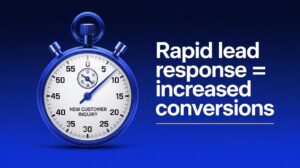Have you ever clicked on a website and instantly felt at home, with everything from the header to the footer flowing seamlessly? Or conversely, have you experienced the frustration of a slow-loading page, cluttered design, and confusing navigation?
It’s a common dilemma that many users face, especially when they’re trying to shop online or quickly find information. A poorly designed website can leave visitors feeling lost, which is particularly detrimental for business owners. If potential customers can’t easily navigate your site or find what they need, they’re likely to abandon it and turn to your competitors.
In today’s digital landscape, a good website is more than just a pretty design; it’s a powerful tool that can make or break your online presence. Understanding the key elements of effective website design is essential for attracting and retaining users. Let’s explore what makes a website not only functional but also engaging and user-friendly, especially those leveraging Atlanta web design and website design services tailored for small businesses.
User Experience (UX) Design
UX design helps in creating easy-to-navigate websites that enhance the user experience. It includes intuitive navigation that helps visitors to find what they are looking for easily. It provides a well-structured layout with clear menus, logical categorization and easy access to key pages is essential.
There must be a clear call to action that guides users toward taking specific actions, such as signing up for a newsletter, making a purchase, or requesting a consultation. Effective CTAs should be prominently displayed and use actionable language.
Mobile Responsiveness
Mobile is one of the most used electronic gadgets. Everyone has a mobile phone and many researches show that most of the traffic on websites comes from mobile devices. Therefore it is important to make your website mobile responsive.
A responsive design ensures that your website adapts seamlessly to different screen sizes including mobile phones, tablets, laptops, or desktops. Your website must be responsive involving flexible grids, fluid images, and media queries that adjust the layout based on the user’s device. To ensure that your site is fully responsive, it is essential to test it across multiple devices and browsers.
Visual Appeal
Visual elements such as color schemes, typography, and imagery play a major role in a website’s overall aesthetic. A cohesive color palette can evoke emotions and establish brand identity, while well-chosen typography enhances readability. High-quality images and graphics can captivate visitors and convey professionalism.
Consistency in design elements reinforces branding and creates a unified experience across all pages. Using the same color scheme, fonts and styles elevate the authenticity of your website. Consistency in design elements reinforces branding and creates a unified experience but also contributes to the credibility of your business. By investing in professional small business website design services, you can create a powerful online presence that attracts customers, builds trust, and drives your business forward.
Content & Functionality
Content is the backbone of your website. High-quality relevant content that addresses users’ needs and questions keeps visitors engaged and encourages them to return clear, concise, and well-organized text can improve comprehension and retention, ultimately leading to higher conversion rates.
Your website content plays an important role in making your website engaging, effective, and popular. Integrating key functionality such as search features, contact forms, and interactive elements can significantly enhance user experience.
Performance and Speed
Website performance especially the page load speed affects the user experience. Studies show that users will likely skip a site if it takes more than usual to load. Slow websites can make users feel annoyed and frustrated. This will reduce customer engagement and negatively impact conversion rates.
You should optimize your website speed by utilizing techniques like image compression, minimizing CSS and JavaScript files, and leveraging browser caching. You can use tools like Google PageSpeed Insights and GTmetrix to identify areas for improvement. These recommendations can be a good source to level up your website’s performance.
SEO Parameters
Keep a check on on-page SEO elements like meta tags, headings, and alt text for images, which are vital for enhancing a website’s visibility in search engine results. Use content that is well-optimized on SEO parameters including proper format and keywords. This will help in enhancing the visibility of your website. A well-optimized content helps search engines recognize the relevance of your pages and increases the chances of ranking on top.
While looking for Website Design Services, make sure your website design integrates the Best SEO practices. Your website design should include balancing aesthetics with functionality. Ensure that your URLs are clean and descriptive and use header tags to create effective content structure. A responsive design will enhance your user experience and SEO strategies. This way search engines can crawl your website easily and identify the relevancy.
Accessibility
Accessibility is an essential element that needs to be considered. Make sure that your website is accessible to every user. You should also target people with disabilities. This may include bigger text sizes, adding alternative text to images, and using high-contrast text and background colors. Atlanta web design services pay attention to every minor detail of your website. You can ask for help to design your dream website.
Organization
The home page is the face of your website. Every user will see the homepage while visiting your website. Therefore, it is important to design and organize visual elements successfully. Let’s discuss some basic web design principles.
Space
This represents the whitespace in your website which is the negative space free of any elements. Whitespaces creates a space for features and draws focus to specific components you wish to highlight.
Visual Hierarchy
This refers to organizing your site to prioritize some features over others. You can highlight the product photos, or call to action with bold colors, or place them in the center of the page.
Contrast
Contrast is the relationship between multiple design elements with differences that are emphasized when shown together like the white font on a black background. Contrast is used to showcase the significance of an element or highlight differences between two things. You can create contrast with color, size, space, and position.
Scale
Scale is a term that shows how elements are sized concerning one another. You need to decide which section you want to target such as product images may be larger than their descriptions. You need to keep a check on the proportion of each element without compromising usability.
Wrapping Up
A good website design significantly impacts user experience and business success. Your business can create an engaging online presence that resonates with users. For small businesses in particular, investing in effective website design services can lead to increased visibility and enhanced customer relationships.
If you are looking to elevate your online presence, partner with a reputable website design company that understands the nuances of small business website design services. With the right design strategy in place, your website can become a powerful tool for growth and engagement.
Frequently Asked Questions
What are the basic elements of good website design?
The critical components of visual appeal are typography, color palettes, images & videos.
What are the key features of a good website?
The qualities of a good website are Outstanding UX/UI, Great Performance, Multi-device Optimization, High security, and A clear purpose.
What are the 7Cs of designing an effective website?
- Context
- Content
- Commerce
- Customization
- Community
- Connection
- Communication
What is the key to a successful website?
Your website should be easy to maneuver and easy to load. Your users should know where they are and what page they need to get to from the first interaction.





